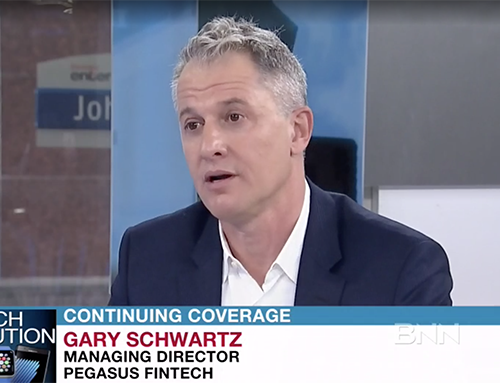The bank’s service ladder is losing its rungs and is being pulled (kicking and screaming) into a marketplace where the consumer is in control.
A customer walks into a bank and asks for money. She will either hit the magic 700 FICO score and walk out of the branch with a cheque, or she will not. There is little fuzzy, human logic below this presumptive line. Banks are binary, very linear and often lack the necessary 360-degree view of their consumers because they have never been challenged to develop these tools.
With customers looking for alternative solutions to the yes-or-no culture, can banks adapt? Can we learn from other industries such as retail, that have been rudely disrupted over the past decade? Can banks learn to adapt and move towards a customer-centric business that allows for just-in-time services, information and access in a frictionless and seamless way? The answer is no.
Retail all over again
This is not a new dilemma. We have seen this movie before. 20 years ago, I first began offering mobile solutions to retailers. Giants such as Sears explained how it would pivot its store and catalogue business to online sales. I believed it. Sears was the most likely candidate to create an Amazon-like logistics business in the cloud. The only question seemed to be, what technology tools would it use?
However, in 2007, when the smartphone business started to empower the shopper, the shopkeeper seemed to lose his mojo. Change wasn’t that simple. Although the store talked about an omni-channel strategy, where the shopper could buy both in the corner store and a virtual store in the internet cloud, retailers never managed to adapt to this new emancipated breed of shopper.
Professionals specialising in shopper marketing (whose job it was to understand the movements and motivation of the consumer in the aisle) suddenly needed to understand the entire journey of the consumer, from the moment they woke up to his trip to the office, the mall and finally (and hopefully) the store.
The retailer attempted to the follow this consumer and be relevant and accessible when he decided to buy. Omni-screen and cross-channel was the daily trope. However, as executives attempted to go digital, many simply cannibalised their sales by pricing products differently across their retail touchpoints, or weren’t able to deliver a seamless shopping experience across all channels. It was a mess, and the consumer knew it.
At the same time, native online stores such as Amazon were able to maintain razor-thin margins and didn’t have to worry about legacy, and expensive bricks and mortar.
10 years later, in 2017, the Sears market value has fallen from $27.8bn to $1.3bn. This is a negative drop of 95%. Best Buy is on life support with a store-in-store strategy that includes Samsung, T-Mobile and other vendors. But it too is down 49%. Only Walmart, which prides itself on skinny margins, grew a paltry 2% this decade.
During this same period, the outlier – Amazon – grew its market value by a whopping 1,910%. This year, it’s reverse-engineering the market by opening physical bookstores and Amazon Go, which challenges the entire idea of a traditional checkout process.
No omni-channel genius can reinvent JCPenney, Kohl’s, Target or Macy’s. These companies have spent an inordinate amount of money on digital pundits, have hired new-age agencies, fired and rehired CEOs with little-to-no results. There is no stopgap solution to disruption.
Marketplace vs ladder
The millennial customer, as we know, expects a marketplace where services are researched and bought from multiple vendors based on price and reputation. In the financial marketplace, there are new services and new competitive offerings never seen before by the bank customer.
A souped-up banking app is becoming table stakes, and it may not be enough. This app proudly touted by the bank is only one of thousands of innovative financial apps in the marketplace.
Our incumbent bank’s business is built on a laddered service offering, with certain services providing a lower-margin hook to higher revenue services upstream. The bank’s ladder of services stretch seamlessly and linearly from the account holder to the mature mortgagee.
This is an old-world construct, and because of it the bank’s customer experience rating is sliding and is about to dip sharply. On one side, non-digital natives, who demand a face at the teller, are peaked at long lines, as banks cut back at their retail head count to make way for services in the cloud. While Generation-Y, wooed by these new age digital services, are less likely to show stickiness to any one bank.
With loyalty under question on both sides of the demographic divide, banks’ service ladder is collapsing in the middle. Customers using third-party solutions are ‘shopping’ their financial service and are less likely to be spoon-fed the bank upsell products, such as mortgages and investments. Just like the retail shopper, the bank’s new consumers have instant access to researching and buying new products and services. The incumbent bank is under siege on all fronts.
Building a financial marketplace
A customer asks for money. She has instant access to a marketplace of options. She shares or has shared the data needs for funders to better understand her and her financial needs. She will instantly walk away with cash in hand, risk assessment and rates dynamically adjusted to service her needs. There is fuzzy, very human logic behind these new-age financial services.
Globally, banks’ data is likely to sit on old legacy systems and is unlikely to be centralised. Regardless of the integrity and accessibility of the bank data, it doesn’t start to reflect the new metadata that includes social reputation. It doesn’t reflect the new reality of the mobile omni-channel interactions and experiences of their customers.
This is unlikely to change soon, because a bank’s priority (or obligation) is to maintain existing services for its ageing population while providing digital window dressing on their front-end services via apps and mobile tools for a new generation of account holders.
The bank’s service ladder is losing its rungs and is being pulled (kicking and screaming) into a marketplace where the consumer is in control.
Yes, some banks may set up “skunkworks” or “scrum teams” to innovate. Others may buy or partner with fintech upstarts. However, just as the corner retail store found, it’s difficult to service a legacy business and new business simultaneously. Folk tend to fail at both.



